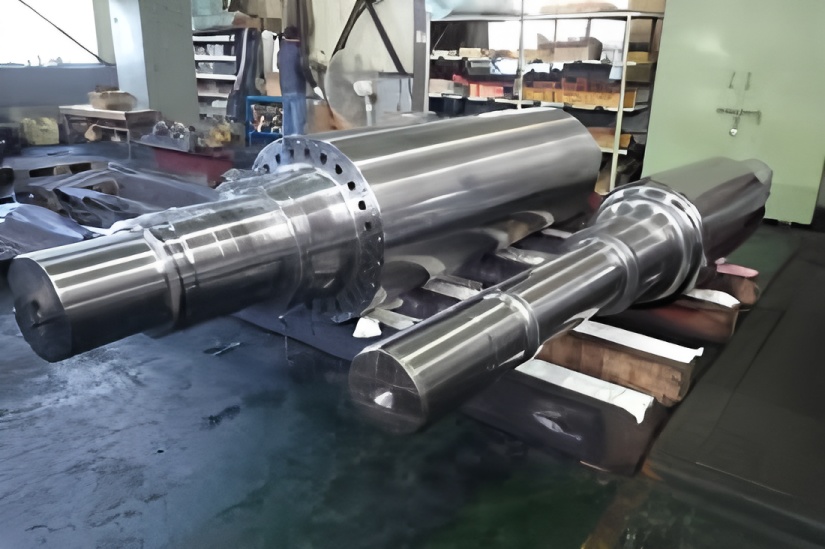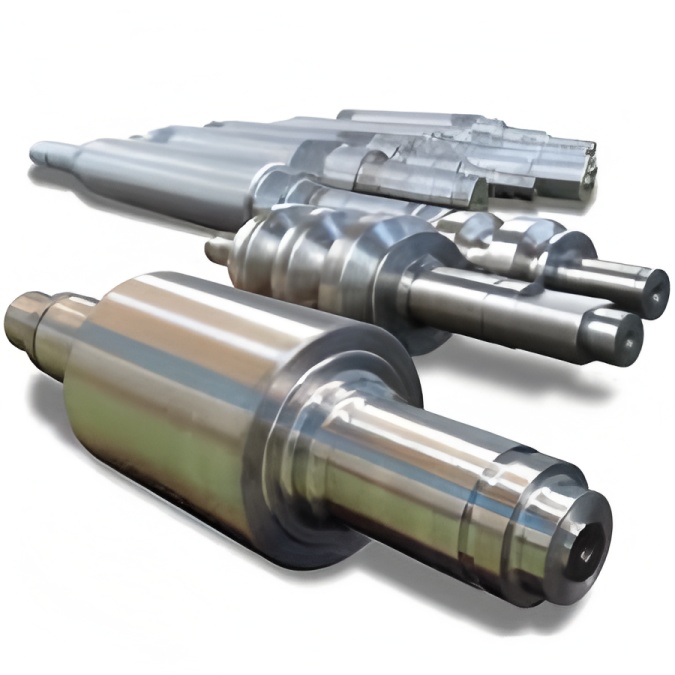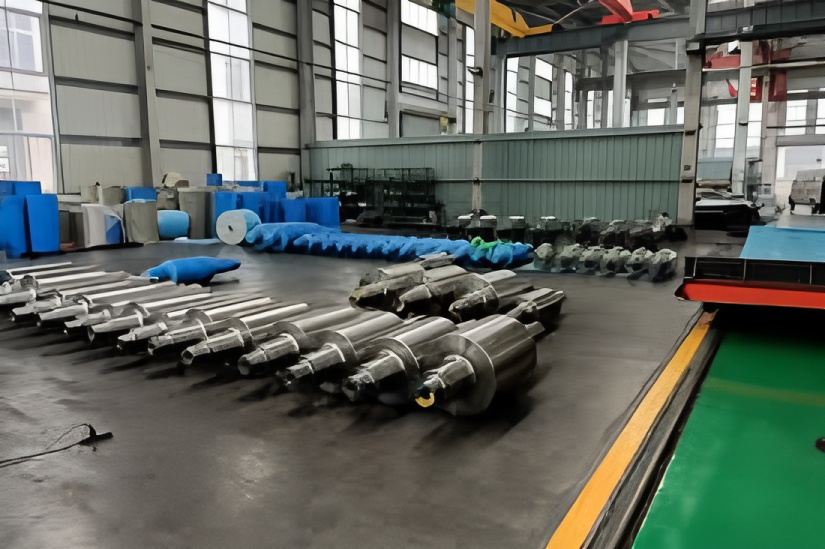Precautions for Width Control
The rough rolling table must ensure proper input for the short stroke function of the side press and vertical roll.
Width control requires coordination between roughing and finishing personnel. Although rough rolling is primarily responsible for width control, finishing operators must also monitor the final product width and promptly report any issues to the rough rolling station.
When applying width compensation on the roughing table, the inheritance function for modified values often needs activation. Operators must closely monitor width changes after adjustments. During the initial blocks of variable specifications, the learning coefficient may be inaccurate, leading to width deviations. However, this error diminishes with continued learning, so the compensation coefficient must be updated promptly. Past incidents of continuous width exceedances at our plant were due to delayed adjustments, highlighting the need to avoid such human errors.
HANI Temperature Control Principle
HANI temperature control primarily depends on heating furnace adjustments to maintain proper heating. If necessary, the rolling line can make minor adjustments by modifying the rolling rhythm, speed, or descaling passes.
If the HANI temperature exceeds the target range, operators should first identify the cause by checking:
Whether the tapping rhythm is too fast, causing delays in the rolling line;
Whether descaling water, cooling water, or reverse water spraying are functioning abnormally;
Whether the temperature curve is normal or if instruments are affected by environmental factors;
Whether rough rolling speed, reduction, and other parameters are within normal ranges.
If rolling line conditions are normal, notify heating furnace personnel and technical staff to decide on adjustments. If abnormalities are detected, contact instrument specialists for instrument issues or technical staff for process problems. If the tapping rhythm is too fast or slow, inform the heating furnace for temperature adjustments. Since furnace adjustments take time, temporary measures like modifying the rolling rhythm, speed, or descaling passes can help regulate HANI temperature. However, manually interfering with rolling speed under load is strictly prohibited.
When HANI temperature is too high, the R2 operator can lower it by limiting the upper speed, increasing descaling passes, or strategically delaying the process.
Descaling pass settings should not be modified under normal production. Manual adjustments are only temporary measures to prevent scrap during abnormalities. For example, reducing descaling passes may be necessary if slabs are briefly misplaced. Under normal conditions, rough rolling operators must notify the heating furnace to adjust temperature. Descaling pass modifications require craftsman approval.
When HANI temperature is too low, operators should instruct the heating furnace to slow or stop tapping and increase heating temperature. Simultaneously, inform the finishing section to prepare accordingly. If needed, the R2 operator may turn off descaling water while ensuring strip surface quality. This ensures rolling stability and prevents scrap.
As slab thickness decreases, the effect of speed limits and descaling adjustments on temperature intensifies with each pass. Operators should select passes based on actual temperature. When adding descaling passes, consider the impact of R2 exit descaling on instruments, especially in the final pass, where exit descaling should be avoided. If incoming material temperature is too low, stop rolling immediately to prevent accidents.
The R2 console must continuously monitor the Raytek thermometer screen to track intermediate billet temperature distribution. If the temperature difference across the billet width exceeds 15°C in any pass, notify the heating furnace to adjust and record the slab number, furnace number, and deviation in the shift log.
Camber Control
For difficult-to-roll specifications, an operator must observe camber on-site and coordinate rectification between R1 and R2. The R2 station can also assess camber using the centerline curve and head/tail shapes on the optimized cutting screen.
If significant side bending occurs after R1, the R1 station should notify the rolling line to control the rhythm and switch to manual mode to adjust the Swivel value, ensuring the intermediate billet shape remains reasonable.
The R2 station must promptly adjust the Swivel value if side bending is detected after any pass, correcting it within the same pass to maintain proper slab shape.
As R2 reduction decreases per pass, Swivel adjustments in the first few passes (e.g., passes 1–5 or 7) should follow a “large to small” principle relative to reduction. Swivel values can be pre-adjusted or fine-tuned during rolling.
R2 operators must adjust every pass; neglecting the first four passes and only adjusting the last is prohibited and subject to strict assessment.
All stations should promptly report camber occurrences to upstream and downstream processes for coordinated control. The Swivel value adjustment range for the R2 mill is -2 to +2.
Head Buckling Control
Under normal conditions, the SKI value in rough rolling should be within ±4. If ineffective at ±4, check for abnormalities in work roll cooling water, roll surface conditions, or slab surface temperature differences. Immediately report on-site conditions and maintain records.
Severe head buckling is often due to abnormal slab temperature. For example, prolonged delays or abnormal heating (e.g., furnace head or reverse charging slabs) can cause warping. Operators should judge and adjust the SKI value accordingly, stopping rolling if necessary.
Production personnel should communicate with the heating furnace based on buckling patterns from different furnaces, enhancing control of slab surface temperature differences. If SKI adjustments are insufficient, increase the action distance (e.g., from 0.5m to 0.7m).
Additionally, the R1 inlet descaling header lacks an anti-collision guard plate. During even-numbered passes, avoid the head to prevent equipment damage.
Measures to Prevent Thermal Cracking of R2 Work Rolls
Early production issues revealed that operators sometimes stopped intermediate billets in the R2 mill and used descaling water to cool them quickly during scrap handling. This practice accelerates scrap processing but causes severe thermal cracks on rolls due to prolonged localized contact, increasing grinding needs and reducing service life. In severe cases, it may lead to roll surface damage. Thus, rough rolling operators must:
Never intentionally stop hot slabs on work rolls. If a slab is stuck due to tripping, notify process and roll grinding personnel immediately to inspect for damage.
During manual steel withdrawal, turn off work roll cooling water when hot billets pass through the roll gap to prevent rapid cooling/heating cracks. Do not press “Fault Ackn” to cancel quick stop signals before rewinding, as this reactivates cooling water.
If using descaling water to cool slabs, manually oscillate the steel while monitoring water level and pressure to ensure proper descaling equipment function.
Thin Gauge Rolling Considerations
Strengthen rectification operations for thin, narrow gauges, including early R1 and R2 passes, ensuring intermediate billet offset ≤20mm.
Rough rolling operators must monitor and report HANI temperature. For thin gauges, ensure HANI temperature is at the upper limit, adjusting R2 descaling passes if necessary.
If rolling becomes unstable, slow the rhythm, contact technical departments, and verify process points (e.g., heating furnace, roughing, finishing). If issues persist, stop to inspect rolls, nozzles, and wipers. Avoid rapid production during instability to prevent scrap and prolonged downtime.
Roll Change Inspection and Confirmation
During roughing roll changes, operators should:
Clear debris (e.g., scale) from R2 work roll bearing seats, locking baffles, and rails on the operating side before roll removal to prevent jamming.
Clean iron sheets and slips from roll bearing seats after roll extraction.
Prepare spare nozzles and water-hanging plates before roll changes. After roll removal, inspect and replace missing, blocked, or damaged parts.
Record exact roll loading/unloading times and any jam incidents during the roll service cycle. Document old roll details when replacing with new rolls.
Maintain and hand over roll sheets between shifts, confirming roll order during shift changes. Lost sheets must be noted in shift records for accountability.
Precautions for R1 Mill Idle Mode
If the R1 mill is idled, set it to idle mode per guidelines. After idling R1, adjust R2 reduction distribution. Since R2’s first pass becomes the initial rolling pass, slab thickness may exceed 250mm, especially with large SSP width. Reduce R2’s first pass reduction from 48mm to 35–40mm to prevent slipping or severe buckling.
If R2 load is excessive, consider increasing passes or reducing intermediate billet thickness for safe rolling.
Other Considerations
Operators must control production rhythm to avoid delays. If delays occur due to faults or specification changes, notify the entire line to adjust tapping rhythm. Continuous delays should not exceed three slabs.
For abnormal process conditions, contact specialists immediately. With professional consent, temporarily modify settings, but avoid prolonged use of interim measures. Cancel manual interventions once normal conditions resume.
Maintain detailed records: document processes, phenomena, temporary measures, and professional advice in shift logs. This aids operator awareness, problem analysis, and accountability.



